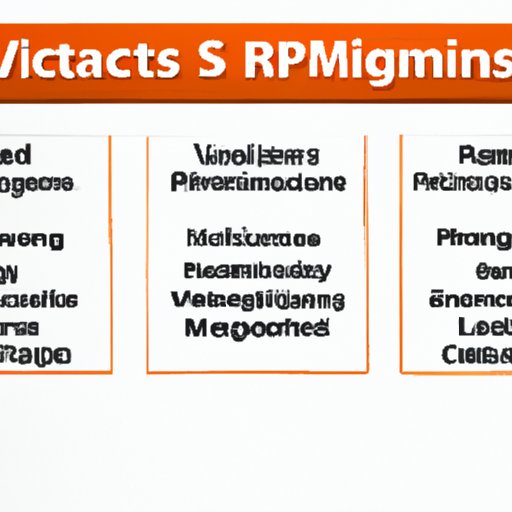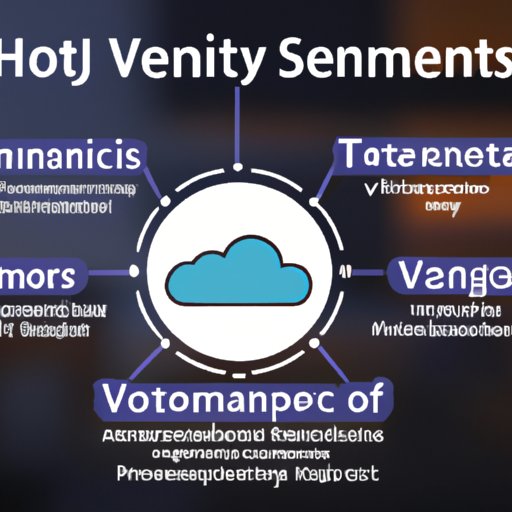Introduction
VMS technology, or video management software, is a type of technology designed to help organizations manage their surveillance video data. It is used by businesses to monitor and protect their premises, as well as to analyze customer behavior and employee performance. In this article, we will explore the basics of VMS technology, its benefits for businesses, and how companies can leverage it to optimize efficiency. We will also look at the different types of VMS technology available, so that you can make an informed decision about which system is best for your business.

Explaining the Basics of VMS Technology: What It Is and How It Works
At its core, VMS technology is a computer program used to manage and store digital video files. It includes a range of components such as cameras, recording devices, and software applications. The system captures and stores digital video footage, which can then be accessed and viewed on a computer or other device.
The typical functionality of a VMS system includes recording and storing video footage, real-time monitoring, motion detection, alarm notification, remote access, and analytics. It can also be integrated with other systems such as access control and point-of-sale (POS) systems.
Different types of hardware can be used in VMS systems, including IP cameras, DVRs, NVRs, and storage devices. IP cameras are connected directly to the network and transmit video data over the internet. DVRs and NVRs are stand-alone devices that record video footage from analog and IP cameras. Storage devices are used to store the recorded video data.
Examining the Benefits of VMS Technology for Businesses
VMS technology offers a range of benefits for businesses. Here are some of the key benefits of using a VMS system:
Improved Security
VMS technology provides enhanced security for businesses by allowing them to monitor their premises in real time and detect any suspicious activity. It can also be integrated with access control systems to restrict access to certain areas. According to a study by the University of Maryland, “video surveillance systems have been proven to reduce crime rates by up to 50%.” 1
Increased Efficiency
VMS technology can help businesses improve their operational efficiency by automating mundane tasks and streamlining processes. For example, facial recognition technology can be used to quickly identify customers and employees, eliminating the need for manual authentication.
Lower Costs
VMS technology can help businesses save money by reducing the need for physical security personnel. Additionally, some VMS systems use cloud computing, which can help businesses reduce their hardware and maintenance costs.
Enhanced Visibility
VMS technology can provide businesses with greater visibility into their operations. It can be used to track customer movements, monitor employee performance, and analyze customer behavior.

A Comprehensive Guide to Implementing VMS Technology
Implementing VMS technology can be a complex process. Here is a comprehensive guide to help you get started:
Establish Goals and Requirements
Before selecting a VMS system, it is important to establish goals and requirements. This will help you determine the features and capabilities that you need from a system.
Select a Vendor
Once you have established your goals and requirements, you can begin researching vendors and selecting the one that best meets your needs. Look for vendors with experience in the industry and a good reputation.
Create a Deployment Plan
Once you have selected a vendor, you should create a deployment plan. This plan should include details such as installation dates, budget, and timeline.
Test and Evaluate the System
Before deploying the system, it is important to test and evaluate it to ensure that it meets your expectations. This will help you identify any issues before they become problems.
Train Employees on Using the System
Once the system is deployed, it is important to train employees on how to use it. This will ensure that everyone is familiar with the system and knows how to use it effectively.
How Companies Can Leverage VMS Technology to Optimize Efficiency
VMS technology can be used to automate processes, monitor and analyze performance, and increase accessibility. Here are some ways that companies can leverage VMS technology to optimize efficiency:
Automate Processes
VMS technology can be used to automate mundane tasks such as recording and storing video footage, so that employees can focus on more important tasks.
Monitor and Analyze Performance
VMS technology can be used to monitor employee performance and analyze customer behavior. This can help businesses identify areas where improvements can be made.
Increase Accessibility
VMS technology can be used to increase accessibility by allowing businesses to access their video data from any location. This can help businesses respond quickly to emergency situations.

An Overview of the Different Types of VMS Technology Available
There are three main types of VMS technology available: cloud-based, on-premise, and hybrid. Here is an overview of each type:
Cloud-Based VMS
Cloud-based VMS systems are hosted in the cloud and require no on-site hardware. They are typically cheaper than on-premise systems, but may not offer as many features.
On-Premise VMS
On-premise VMS systems are installed on-site. They offer more features and flexibility than cloud-based systems, but require more setup and maintenance.
Hybrid VMS
Hybrid VMS systems combine the features of on-premise and cloud-based systems. They allow businesses to access their video data from any location, while still offering the features and flexibility of an on-premise system.
Conclusion
VMS technology can provide businesses with a range of benefits, from improved security to lower costs. It can also be used to automate processes, monitor and analyze performance, and increase accessibility. There are three main types of VMS technology available: cloud-based, on-premise, and hybrid. When selecting a system, it is important to consider your goals and requirements, select a vendor, create a deployment plan, test and evaluate the system, and train employees on using the system.
Summary of Benefits of VMS Technology
VMS technology can provide businesses with improved security, increased efficiency, lower costs, and enhanced visibility. It can also be used to automate processes, monitor and analyze performance, and increase accessibility.
Final Thoughts on VMS Technology
VMS technology is a powerful tool for businesses looking to protect their premises, analyze customer behavior, and optimize efficiency. By considering your goals and requirements, selecting a vendor, creating a deployment plan, testing and evaluating the system, and training employees on using the system, you can ensure that you select the right system for your business.
(Note: Is this article not meeting your expectations? Do you have knowledge or insights to share? Unlock new opportunities and expand your reach by joining our authors team. Click Registration to join us and share your expertise with our readers.)
